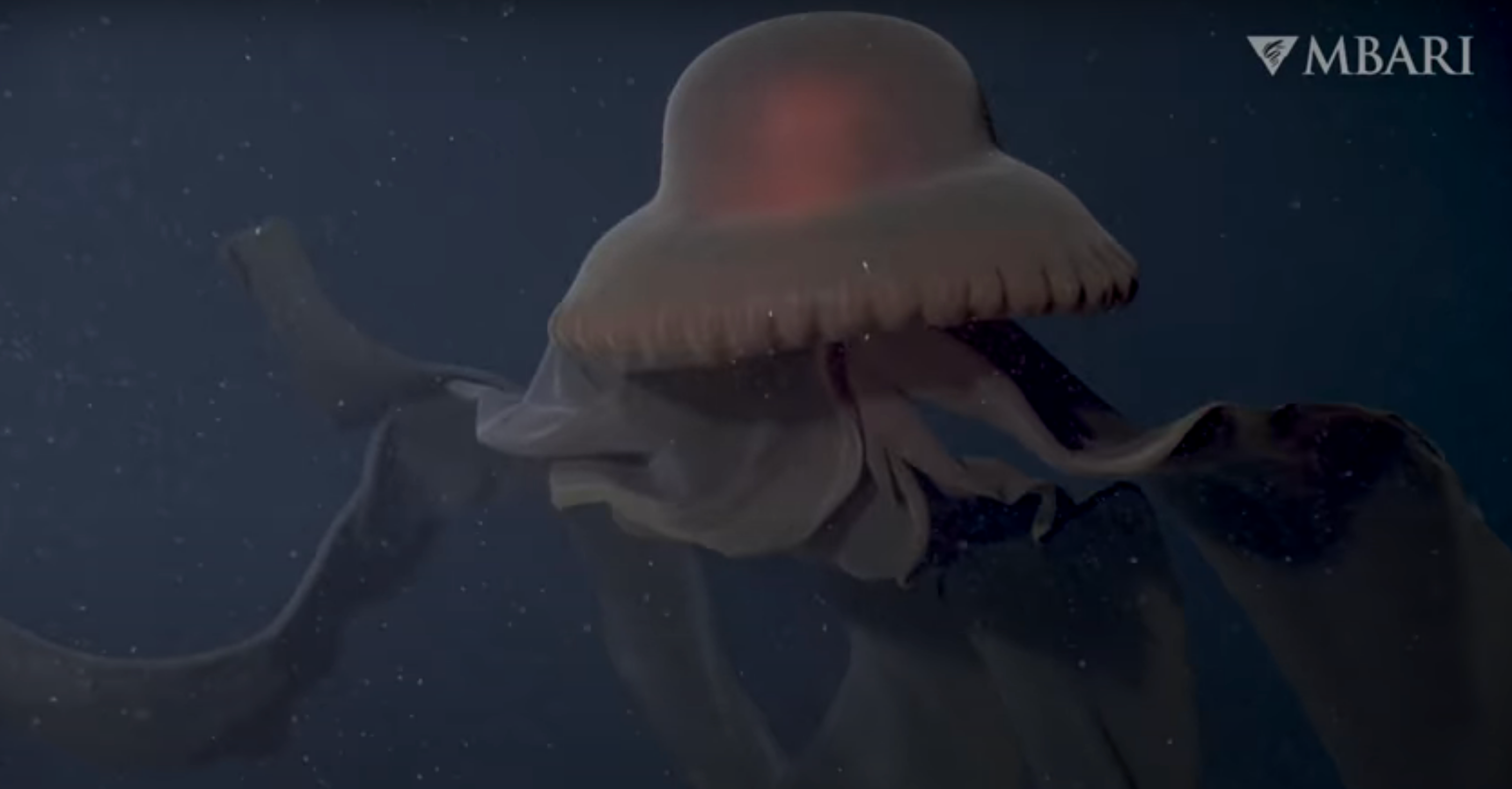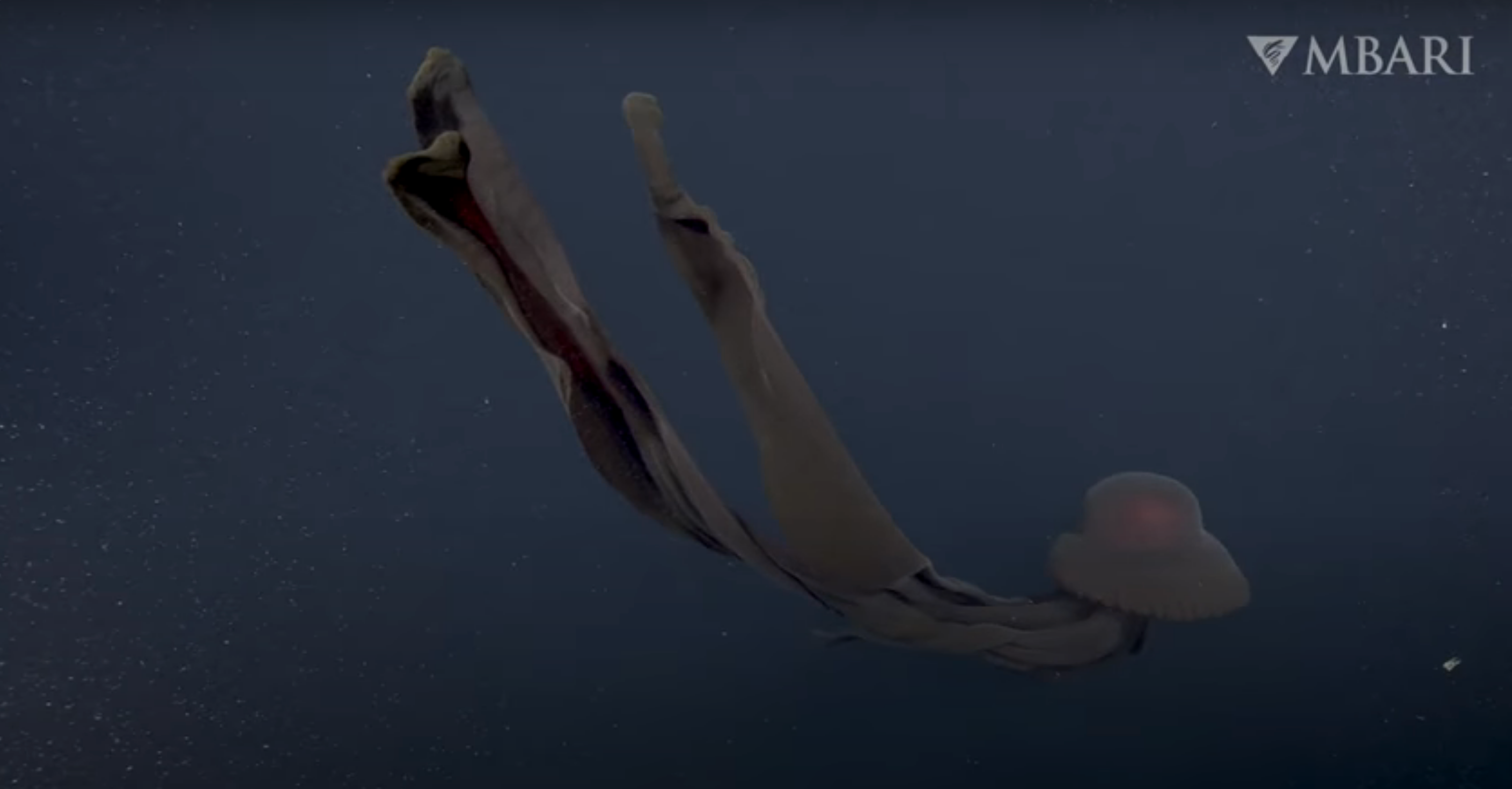The incredible footage was captured in the deep waters of Monterey Bay, and showcases a giant phantom jellyfish with massive mouth-arms.
Researchers have seen a large deep-sea jellyfish with the assistance of a remotely operated vehicle (ROV) named Doc Ricketts off the coast of California, in an extremely rare sighting. The footage revealed the creature’s unique and exquisite features.
The uncommon encounter was documented in November this year, 990 meters (3,200 ft) deep in Monterey Bay, according to a report issued by the Monterey Bay Aquarium Research Institute (MBARI).
The enigmatic phantom jellyfish was initially discovered in 1899, but scientists did not recognize it as a distinct species until 1960. Scientists still know very little about this creature.
The specimen of the huge phantom jelly has only been seen 110 times in 110 years across the world. According to the MBARI research, despite thousands of dives, their ROVs have only observed this amazing species nine times.
The huge phantom jellyfish has the following characteristics:
The bell of this deep-sea denizen is more than one meter (3.3 feet) broad, with four ribbon-like oral (or mouth) arms that can grow to be more than 10 meters (33 feet) long, according to an MBARI report.
The species is said to inhabit anywhere between the surface and 21,900 feet in depth. It does, however, remain in the twilight zone, which is just beyond the reach of sunlight.
The organism, formally known as ‘Stygiomedusa gigantea’, is found all across the planet except in the Arctic Ocean, according to the experts.
It’s worth noting that, in the past, scientists depended on trawl-nets to examine deep-sea species; but, the jellies, which transform into a viscous goo in trawl nets, were difficult to research using this outdated method. Fish, crabs, and squids are among the only creatures that can be effectively studied from nets.
Researchers may now examine these creatures in their native habitat with high-definition footage thanks to the robot cams. I, personally, prefer this “no-touch” approach.
Watch the mesmerizing video here:







